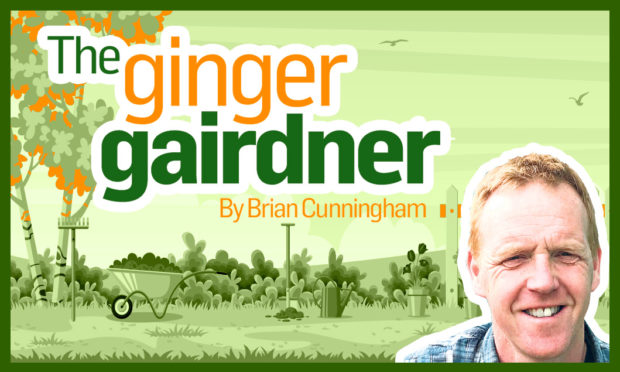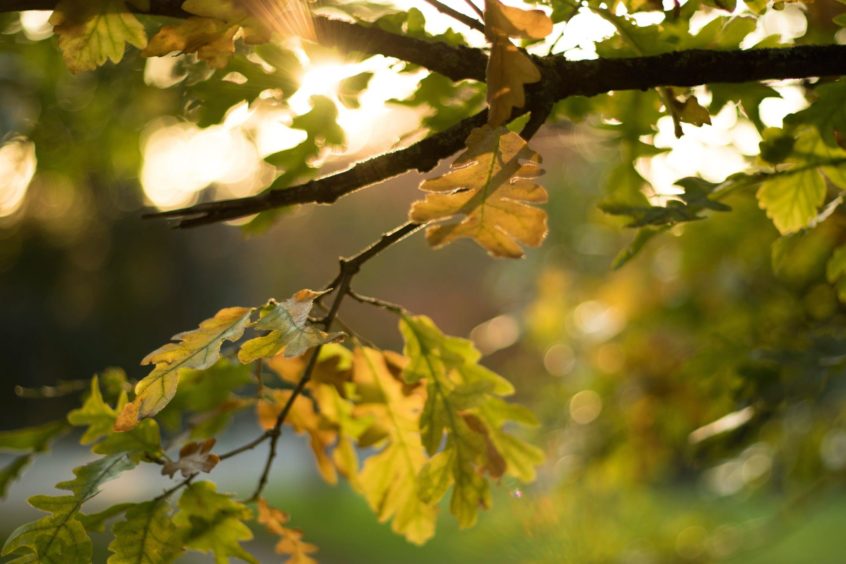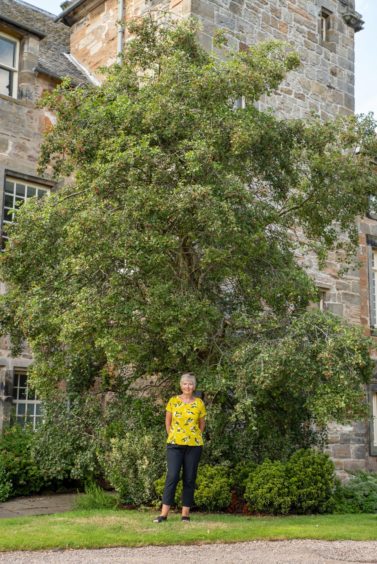This week, Brian Cunningham pauses to admire the most amazing plants of all – they are the lungs of the Earth and a constant through time …
In the kingdom of plants, trees have to be the most amazing species of all. They affect – and are a part of – our lives in so many ways. I suspect that, most of the time, they do so without the majority of us even realising it.
Most crucial of all, they are the lungs of our Earth, cleaning the air we breathe. Practically, they provide the timber required for construction, not to mention visually adding shape, structure and interest to our landscapes and gardens.
Trees are an essential source of food and a place of safety and shelter for many of our native birds, mammals and insects. Those that are loved and cared for, and left largely unharmed by the hand of human activity, can be around for long time.
When I walk past the 400-year-old sycamore in the grounds of Scone Palace planted by King James VI of Scotland in 1617, I can’t help but think of all the things that have happened in our history during that tree’s lifetime: the Union of the Crowns, a Jacobite uprising, an industrial revolution and two world wars have all taken place while it was quietly growing away.
In Scotland, we are privileged to have plenty trees of similar heritage value and, every year, the Woodland Trust gives us the opportunity to share their stories and celebrate them.
Individuals and communities nominate a tree that means something to them, next follows the chance to vote for one to receive the acclaimed title of Scotland’s Tree of the Year.
This year there are five trees from which to choose, and they can be found all around the country.
A symbol of our times is the sycamore Climate Change Tree growing at the former colliery Gartmorn Dam, now a country park and nature reserve near Alloa. Flourishing atop the eroding remains of the fossil fuel industry, it displays an extraordinary tangle of roots triumphing as the colliery spoil diminishes.
Trees can make wonderful focal points in landscape photography, particularly when using the light of the sunset and sunrise or to capture the scale of mountain views.
The Milarrochy Oak has been the subject for many a photographer walking the West Highland Way, unable to resist the opportunity to stop and capture the spot where it grows on a picturesque bay by Loch Lomond. Notable for its contorted appearance, the tree manages to survive standing not-quite-in – and not-quite-out-of – the waters of the loch.
Down in the Borders is a tree inspiring a project that, to me, represents hope for the future of our natural landscapes. Twenty years ago The Survivor tree was a lone rowan clinging to a stream bank in the Carrifran Valley. Now it shares the landscape not only with its own children but also over half a million other fellow Scottish native trees, planted to revive the rich diversity in this wild heart of southern Scotland.
At the other end of the country, near Inverness, we have the the Lord President’s Oak. Duncan Forbes, Lord Culloden (1685-1747) would take his wife Mary to sit on a large stone where together they would enjoy the views of the Moray Firth.
To make way for the new Highland railway the stone was moved to its present site in 1855, when it is thought the oak was planted. It is now loved by the many who pass beneath it, as they enjoy the grandeur of the Culloden forest.
The final tree – without me showing any bias whatsoever, saving the best until last – we have the clear and absolute winner direct from Courier Country and my home town of St Andrews, Queen Mary’s Thorn.
This ancient hawthorn was reputed to have been planted by Mary, Queen of Scots, during one of her frequent visits to the old town back in 1563.
Situated in the quadrant of St Mary’s College at St Andrews University, smaller trees grow from the remains of the original old stump, which continues to thrive with the aid of props to support it. These also help to emphasise the age of this veteran tree.
As a boy, I can recall with fondness walking past this tree on the way home from Sunday school, amazed as I first understood that a tree could live for over 400 years, being able to connect the present with the past.
These five sum up perfectly all the different ways trees can touch our everyday lives, helping show me that perhaps we don’t just take them for granted after all.
I know I’m a plant geek and this is what I enjoy, but take a walk in any garden or park and I guarantee there’s a story to tell behind every tree you see. One of my favourite books is Heritage Trees of Scotland by Donald Rodger featuring 100 similar trees from all corners of our country.
To learn more about the finalists in this year’s Tree of the Year competition, please visit the Woodland Trust’s website and vote for your favourite.
The Scottish winner will go up against those from England and Wales, with the UK winner being our representative for European Tree of the Year.
“Mary’s Thorn, Queen of Europe” has a nice ring to it, don’t you think?
Brian Cunningham is a presenter on BBC’s Beechgrove Garden and head gardener at Scone Palace.












